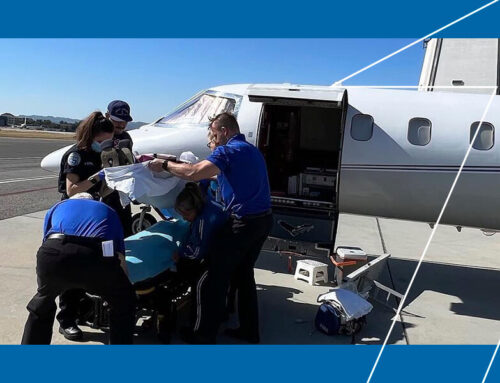Heart disease is a broad term that refers to multiple types of heart conditions, including:
- Coronary artery disease (CAD)
- Valve disease
- High blood pressure
- Congenital heart defects
- Arrhythmias
- Heart failure
These conditions and many more affect the heart’s ability to do its job efficiently. Heart disease and its associated conditions are the leading cause of death in the U.S. Many heart conditions are manageable, making it possible for you to travel. Generally, if your condition is stable, you can still fly safely.
To help reduce your risk when flying, learn what precautions you can take to limit the effects of your heart condition in flight.
Flying With High-Risk Heart Conditions
The effects of flying on heart conditions can vary depending on the type and severity of the condition. While flying can be safe for those with stable conditions, you should still be aware of potential dangers.
Here are factors to be aware of when flying that increase risk of heart conditions:
- Low air pressure and oxygen levels: The slightly lower oxygen pressure in an airplane cabin at high altitudes is relatively insignificant for most people. However, you may feel the effects of the air pressure and oxygen levels if you have a heart condition. Your body’s oxygen concentration will decrease, which can aggravate existing heart conditions. The changing air pressure can also affect your body’s gas volume, leading to air expansion in your lungs. This can be particularly damaging if you recently had heart or lung surgery.
- Increased stress: Flying is stressful for many people, and if you have a heart condition, you may experience increased stress while traveling. Increased stress can strain your heart, exacerbating your condition.
- High altitude problems: Higher altitudes have thinner air, so your heart must work harder to carry enough oxygenated blood through your body. As your heart works harder to compensate for the thin air, you may experience more symptoms of your condition, which should be monitored carefully.
- Confined spaces: On an airplane, you’re stuck sitting in your seat for the length of the trip, aside from short walks to the bathroom. Sitting in such confined spaces for long periods significantly increases your risk of developing venous thrombosis and blood clots. These risks are much higher if you have certain heart conditions, like an implanted device or CAD.
Understanding the risks can help you better prepare for your trip and watch for signs that may call for medical attention.
Precautions to Reduce Risk of Heart Conditions Flying
Planning your flight and trip with your heart condition in mind can help ensure you’re effectively prepared. You can take several precautions to help reduce risks while in the air, including the following:
Get a Pre-Flight Evaluation
Before traveling, consider meeting with your doctor or cardiologist to confirm your condition and determine whether you need any assessments or adjustments before your flight. You should also consider a pre-flight evaluation if you’ve been concerned about recent symptoms or an unstable condition.
For example, if you recently had a heart attack, you may need a stress test to evaluate your risk of another while flying. Your doctor may also check your blood’s oxygen saturation to determine if you’re at a safe level to fly. Unstable heart conditions are much riskier to fly with, and your doctor will likely advise you to avoid flying until it’s under control.
Getting a pre-flight evaluation is also a great time to get recommendations from your cardiologist for facilities or doctors you should visit if you experience issues when out of town. Knowing where to go in these situations can help alleviate stress.
Request an Aisle Seat
Some heart conditions like congestive heart failure have side effects that may increase the frequency and need to use the restroom. If you anticipate needing to go frequently on your flight, consider requesting an aisle seat so that navigating to and from the restroom is easier. Going to and from the restroom also lets you move around periodically, keeping blood flowing to help prevent blood clots.
Keep Prescriptions Close
Flights can sometimes be unpredictable — they can get canceled or delayed on a whim. When packing your medications, be sure to pack them accordingly. Rather than leaving your medications in your checked bag, pack them in your carry-on so you can easily access them while waiting in the terminal and on the flight. This helps you avoid missing any scheduled medications and keeps them accessible if needed.
Stay Hydrated
Dehydration is another common risk that can aggravate an underlying condition. Before and during your flight, avoid caffeine and alcohol, as these types of drinks can be especially bothersome when you have a heart condition. Be sure to drink lots of water and stay hydrated before, during and after your flight.
Know the Warning Signs
Heart condition complications can present themselves as various symptoms. Knowing the warning signs and when to be concerned can help you and those traveling with you identify when you may need medical attention. Some warning signs may include:
- Chest pain
- Shortness of breath
- Lightheadedness
- Rapid breathing
- Rapid heart rate
If concerning issues arise during your flight, let a flight attendant know. Passenger planes are equipped with an automated external defibrillator (AED) and supplemental oxygen, among other medical kits, that the flight crew is trained to use.
Travel With a Medical Escort
Traveling with someone else can be extremely helpful, especially when monitoring your condition and managing stress. However, you may need to travel alone in some instances. You should highly consider flying with a medical escort when this is the case.
These escorts are medical professionals that can provide care and assistance on commercial flights. They are a cost-effective, safe way for noncritical and stable heart disease patients to fly.
Fly Confidently With an Air Escort from AirCARE1
There are risks when flying with a heart condition, though it’s still an option for many. You can likely still visit family or go on vacation — it will just take extra precautions. At AirCARE1, our medical escorts stay with you throughout your flight to monitor your oxygen levels and vitals, administer medications or oxygen, and provide critical and emergency care as needed. We fly with you to ensure your comfort and health from one destination to another.
Traveling with an air medical escort is highly beneficial for your safety and peace of mind. Fly with confidence, and request a quote for our medical escort services today.
Linked sources:
- https://www.airambulanceone.com/commercial-medical-air-escort-service/
- https://pubs.asahq.org/anesthesiology/article/108/4/749/8336/Management-of-In-flight-Medical-Emergencies
- https://www.airambulanceone.com/request-a-quote/
- https://www.airambulanceone.com/air-ambulance-medical-equipment/
- https://www.airambulanceone.com/assessing-patients-conditions-in-advance-of-air-medical-transportation/
- https://medlineplus.gov/heartdiseases.html
- https://onlinelibrary.wiley.com/doi/10.1002/clc.22741
- https://www.ncbi.nlm.nih.gov/pmc/articles/PMC6490424/
- https://www.heart.org/en/health-topics/consumer-healthcare/what-is-cardiovascular-disease/travel-and-heart-disease
- https://myhealth.alberta.ca/Health/aftercareinformation/pages/conditions.aspx?hwid=abo1110
- https://my.clevelandclinic.org/health/diseases/24129-heart-disease




